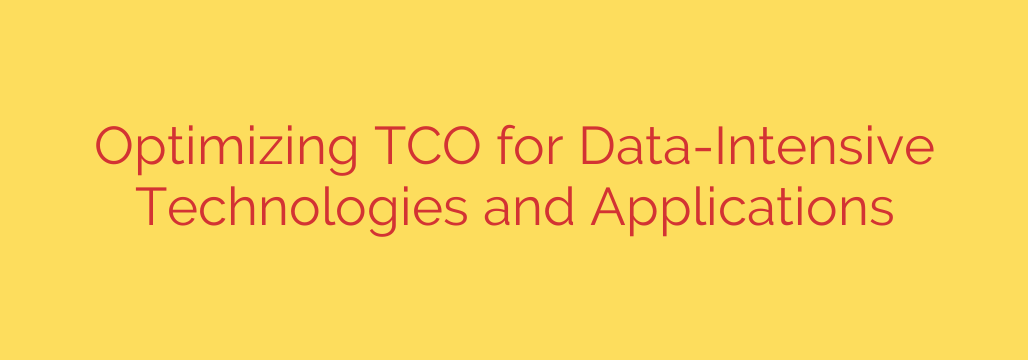
Unlock Cost Savings: Optimizing Total Cost of Ownership for Data-Intensive Technologies
In today’s data-driven world, organizations are increasingly reliant on technologies and applications that handle massive volumes of information. However, this reliance comes with a significant price tag. Understanding and optimizing the Total Cost of Ownership (TCO) for these data-intensive technologies is crucial for maximizing return on investment and ensuring long-term financial sustainability.
What exactly is TCO? It’s more than just the initial purchase price. It encompasses all direct and indirect costs associated with a technology throughout its lifecycle. This includes everything from hardware and software acquisition to implementation, maintenance, support, training, and even decommissioning. Neglecting any of these factors can lead to a skewed understanding of the true cost and potentially hinder strategic decision-making.
So, how can organizations effectively optimize TCO for data-intensive technologies? Here are some key strategies:
Strategic Planning and Needs Assessment: Before investing in any new technology, conduct a thorough assessment of your specific needs and requirements. Clearly define your goals and ensure the chosen technology aligns with your long-term strategic objectives. A well-defined plan will prevent unnecessary expenses down the line.
Right-Sizing Infrastructure: Avoid over-provisioning resources. Carefully analyze your current and projected data storage and processing needs. Consider scalable solutions that allow you to adjust resources as required, preventing wasteful spending on unused capacity. Cloud-based solutions often provide this flexibility.
Embrace Automation: Automate repetitive tasks such as data backup, system monitoring, and software updates. Automation reduces the need for manual intervention, freeing up valuable IT resources and minimizing the risk of human error, which can lead to costly downtime.
Optimize Data Management: Implement efficient data management practices, including data deduplication, compression, and archiving. These techniques reduce storage requirements and improve performance, resulting in lower infrastructure costs. Regular data cleansing is also vital.
Vendor Negotiation: Don’t be afraid to negotiate with vendors to secure the best possible pricing and service level agreements (SLAs). Explore different licensing models and consider open-source alternatives where appropriate. Leverage competitive bidding to drive down costs.
Skills and Training: Invest in training your IT staff to effectively manage and maintain data-intensive technologies. A well-trained team can optimize performance, troubleshoot issues quickly, and prevent costly outages. This also reduces reliance on expensive external consultants.
Security Considerations: Data security breaches can be incredibly costly, both financially and reputationally. Implement robust security measures to protect your data from unauthorized access and cyber threats. This includes regular security audits, vulnerability assessments, and employee training on security best practices. Remember: Investing in security is investing in cost avoidance.
By diligently implementing these strategies, organizations can gain a clearer understanding of their TCO and proactively manage costs associated with data-intensive technologies. This allows for better resource allocation, improved financial performance, and a stronger competitive advantage in the ever-evolving digital landscape. Taking a proactive approach to TCO optimization is no longer a luxury, but a necessity for sustainable growth and success.
Source: https://datacenternews.asia/story/optimising-tco-for-data-intensive-technologies-and-applications








